Executive Summary
Trying to guess the next Fed Chair is something between a parlor game and a fire drill. Both involve conjecture and speculation but only one is a useful exercise and even then, only marginally so. In the roughly five months between now and the end of Chair Yellen’s term on February 1, 2018, much can change, but we would be remiss not to keep you up to speed on the contenders for the job and the difference the potential change in leadership could bring. If we do get a new Fed Chair, it would be only the third changing-of-the-guard since 1987.
The current Fed Chair, Janet Yellen, could still be at the wheel, but her grip has been loosening in recent weeks. A poll conducted by the National Association for Business Economics puts Yellen’s odds of re-nomination at less than one in five.1 President Trump economic adviser Gary Cohn is at the top of the alternate list.
The most important consideration we stress to clients when asked about who will be the next Fed Chair and what it will mean is this: the Fed is an institution. There are more than 300 Ph.D. economists employed by the Federal Reserve Board and each brings their own analysis and viewpoint regardless of who holds the title of Chair. The 12-member Federal Open Market Committee (FOMC) comes to its decisions by consensus, not by edict.
This special report offers an introduction to the various contenders for the top job at the Fed. Any credible Fed Chair candidate would not meaningfully alter the market outlook or our baseline forecasts for GDP growth, interest rates or the dollar in an immediate way. That said, the Fed Chair can often come to symbolize the institution he or she represents and in that capacity command a degree of power and influence over time. On that basis, we offer these thoughts on who might hold the job come February 2, 2018.
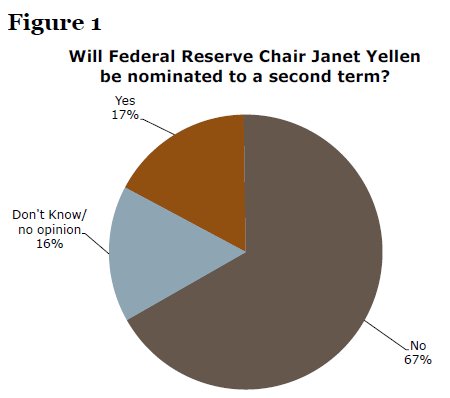
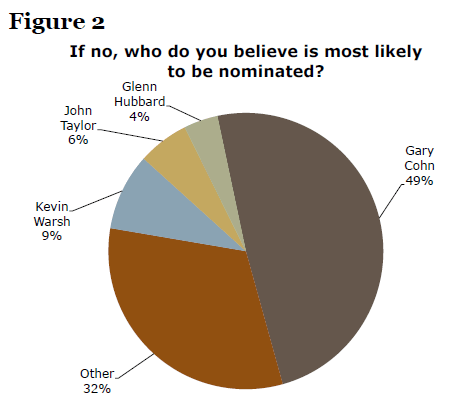
The Current Fed Chair in Context
While the Chair of the Federal Reserve is appointed to a four-year term by the President of the United States, a Chair can be appointed to several consecutive terms. When Alan Greenspan finished his final term in 2006, a whole generation had started a career in finance knowing no other Fed Chair than the Maestro. Though Mr. Greenspan served at the pleasure of four presidents, he was not the longest serving. That distinction goes to William McChesney Martin Jr., a veteran of the Second World War whose formal degree was in Latin and English rather than finance or economics, who served from 1951 to 1970.
Chair Yellen’s term is due to expire in just over five months on February 1, 2018. She may be appointed to another term, but, at that point, her four years on the job would place her years of service about average in terms of duration compared to past Fed Chairs (that is, if we exclude the longer terms of service of Mr. Martin and Mr. Greenspan from the calculation).
Judging by the numbers, the first female head of the world’s largest central bank has made significant progress in meeting the Fed’s dual mandate. From the start of Chair Yellen’s term in February 2014, PCE inflation has averaged 1.1 percent, core PCE averaged 1.6 percent, the unemployment rate has averaged 5.2 percent and the average quarterly pace of GDP growth has been 2.4 percent.
Admittedly the pace of inflation was well-below the Fed’s 2.0 percent target, but throughout her tenure, the United States has sidestepped outright deflation for the most part. The Fed’s preferred measure of inflation, the PCE deflator, never went negative on a year-over-year basis; headline CPI did briefly dip below zero.
The same cannot be said for many of the world’s other large developed economies that did grapple with outright declines in consumer prices during the same period. The European Central Bank, the Bank of England and the Bank of Japan all experienced outright deflation in the form of negative year-over-year rates of CPI inflation in those economies.
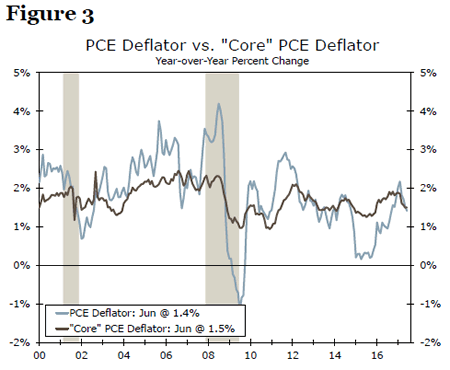
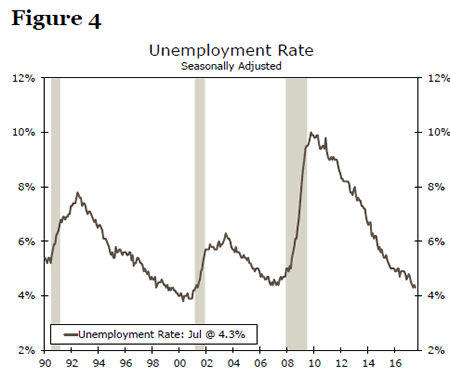
Do You Think It Matters Who Sits on the Iron Throne?
As we noted in the introduction to this report, there is a lot that can change in the roughly five months between now and the end of Chair Yellen’s term and this will certainly not be the last thing that passes your desk on the subject of who will be next to lead the Fed.
As a preamble to the discussion of possible Fed replacements, we would underscore the point that the most important consideration in the context of this topic is that the Fed is an institution. The rate-setting and policy-making FOMC has 12 members, seven from the Board of Governors (which includes the Chair) and five presidents of the Regional Banks (four of those seats rotate, the president of the New York Fed has a permanent seat). The most significant observation we can offer about the new Fed Chair, whoever that may be, is that person will preside over a group that is consensus-driven with a very specific dual mandate to promote price stability and maximum employment. On that basis, any credible Fed candidate would not meaningfully alter the market outlook for our baseline forecasts for GDP growth, interest rates or the dollar.
Top Contenders
That said, the selection itself may not have an immediate influence on financial markets but the Fed Chair can often come to symbolize the institution he or she represents and, in that capacity, command a degree of power and influence over time. On that basis, we offer these thoughts on who might hold the job come February 2, 2018.
The Incumbent: "Not Toast"
Although her term is due to expire in just over five months, the notion that Chair Yellen may yet be appointed to another term should not be dismissed out of hand. Although the president has been hot and cold on the current Fed Chair, there are few examples of subjects on which his public statement do not contradict. After acknowledging his respect for her in an April interview, the president, offering his assessment of Chair Yellen’s long-term prospects at the Fed, said that she was "not toast."
As we have already demonstrated, Chair Yellen is a known entity in the role. We are not offering an endorsement, but it has not been uncommon for a sitting president to re-nominate a Fed Chair appointed by a prior president, even when the prior president was from the other party. Fed Chair Bernanke was first appointed by President Bush, a Republican, but stayed on at the request of President Obama, a Democrat. Still the prospects are not overwhelming for the sitting Chair. A National Association of Business Economics (NABE) poll of economists put the odds of another Yellen term at the Fed at 17 percent.
The Odds-on Favorite: I Scream Cohn
In another Wall Street Journal interview near the end of July, the president affirmed that Yellen remained in contention to hold the job even as he acknowledged that his economic adviser, Gary Cohn, was also a top-contender along with "two or three" others he chose not to name.2 The same NABE poll mentioned above put Cohn at the top of the short list with 49 percent of respondents selecting him as the next to lead the Fed if Yellen were not the nominee.
At an Institute of International Finance conference in March 2016, then Goldman Sachs President and COO Cohn downplayed the importance of central bank guidance, saying, "In some respects, if central banks would go back to being central banks, and really worry about what’s going on in the economy and do what they think they need to do, instead of spending all their time talking about what they’re going to do, we’d probably all be in a lot better position."3 Cohn later added that if all the world’s central banks "raised interest rates by 300 basis points, the world would be a better place."
Gary Cohn embraces a more market oriented approach to economic policy, rather than the current academic approach in place by Chair Yellen. Although Cohn doesn’t fit the traditional mold of a Fed Chair, his lack of formal economics training might not be as disconcerting as it would be in another candidate due to his extensive experience on Wall Street and more than 25 years working in finance. On that basis, as Chair of the Federal Reserve, Cohn’s approach would be less academic and more market-focused.
The Best Longshot: Mr. Conventional
The best "longshot" pick may be Kevin Warsh, who picked up 9 percent of the votes in the NABE poll of most likely nominees other than Yellen. If Gary Cohn is the unconventional choice, Warsh is Mr. Conventional. After four years of working in various economic roles in the George W. Bush administration, then President Bush appointed Warsh to fill a vacancy on the Fed’s Board of Governors where he served from 2006 until 2011. A Republican, Mr. Warsh now serves as a visiting fellow at Stanford’s Hoover Institution. President Trump’s well-known affinity for low rates could be seen as being at odds with Warsh’s somewhat hawkish tendencies for which he was known in his time at the Fed, but he would otherwise fit the bill for a candidate that checks all the boxes for the president.
Other Possibilities
Another potential, but less likely candidate, is Stanford Economics Professor John Taylor, whose eponymous "Taylor Rule" presents a formulaic approach to economic policy, implying with each one-percent increase in inflation, a central bank should raise the nominal interest rate by more than one percentage point. Coincidentally, Mr. Taylor and Mr. Warsh are both fellows at the Hoover Institution.
Glenn Hubbard is the current Dean at Columbia’s Business School and a professor of economics there. He previously served as Deputy Assistant at the Treasury in the 1990s. In another example of the small world of economics, Mr. Hubbard and Mr. Warsh worked together for a stretch in the early 2000s when Mr. Warsh was Special Assistant to the President for Economic Policy and Mr. Hubbard was the Chairman of the President’s Council of Economic Advisers.
With Monetary Policy, Fed Chair Will Have to Keep an Eye on Fiscal Policy
In addition to managing the fed funds rate, the next Chair of the Federal Reserve will also need to oversee the unwinding of the Fed’s roughly $4.5 trillion balance sheet. There are a number of Republican members of Congress who would like to see the Fed get out of the housing market and unwind some or all of its $1.8 trillion portfolio of MBS and agencies. In many instances, these are members of Congress who also place a high value on balancing the federal budget.
Without making a value judgement about whether or not the Fed "should" maintain a large balance sheet, the Fed’s large holdings currently help reduce the budget deficit. In an environment of rising deficits and policy proposals for which finding the funding is often a major challenge, reduced remittances to the Treasury cannot be ignored. As illustrated in Figure 5, Fed earnings remitted to the Treasury over the past 12 months add up to roughly $85 billion. Without those remittances, last year’s fiscal budget deficit would have been 16 percent larger.
Furthermore, despite a debt-to-GDP ratio that has doubled since the Great Recession began, net interest costs as a share of GDP have remained historically low (Figure 6). With monetary policy tightening likely driving interest rates higher, this represents yet another way in which monetary policy can influence the fiscal side of the economic policy equation.
In a May interview on Bloomberg, Mr. Warsh weighed in on precisely this dynamic, saying, "The sooner they (Fed policy-makers) come out with principles, the easier markets can adjust and, importantly, the easier the Treasury can know what their issuance calendar should be. We are all part of one government."
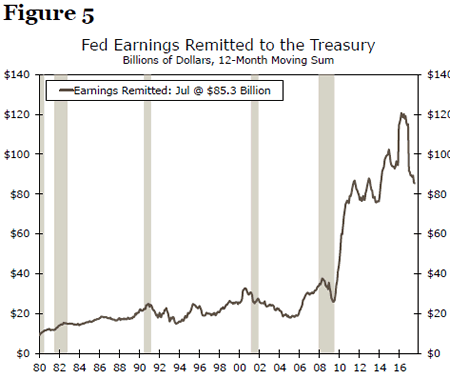
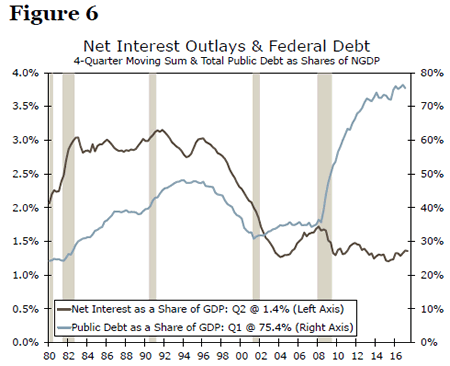
Conclusion
To reiterate our view, any credible Fed Chair candidate would not meaningfully alter the market outlook or our baseline forecasts for the economy, the path of interest rates or the value of the dollar. That said, the Chair of the Fed can often come to symbolize the institution he or she represents and in that capacity, command a degree of power and influence over time.
Ms. Yellen would signal convention and continuity. Mr. Cohn would be a somewhat unconventional pick inasmuch as he is not a formally trained economist, but then neither was the longest-serving Fed Chair, William M. Martin Jr. Additionally, Mr. Cohn’s extensive experience in finance deflects the criticism of his academic credentials. Mr. Warsh is the most likely of the "longshots" and would also represent a conventional pick with his experience at the White House, at the Fed and more traditional academic credentials.
The Fed has lowered its estimates of what it considers the appropriate level for the fed funds rate in the longer-run from 4.25 percent in 2012 to 3.0 percent today.5 The ultimate terminal fed funds rate will likely be lower when the current cycle comes to an end than it has been in prior economic cycles. With limited scope for the Fed to cut rates when the next recession comes along, whenever that may be, the Fed may have to go back to the well of quantitative easing. This could entail resuming reinvestments or even returning to asset purchases, depending on what economic conditions warrant.
Normalization of the Fed’s balance sheet is an important consideration for the next Fed Chair as well. Monetary policymakers will be challenged to find a balanced path that begins the process of unwinding years of unconventional monetary policy while simultaneously keeping the economic expansion chugging along. The various scenarios considered in this report are offered to help decision-makers frame their thinking and make informed decisions as this process unfolds.













